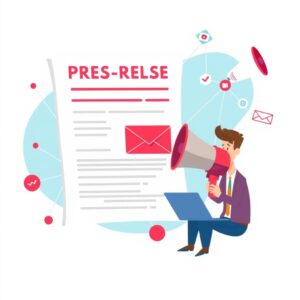Certainly! Here’s an expanded guide based on your listed points to help you effectively promote your event:
1. Define Your Event’s Unique Selling Points
– Audience Appeal: Identify what makes your event stand out, such as renowned speakers, unique themes, or interactive formats.
– Value Proposition: Clearly articulate the benefits for attendees, such as networking opportunities, skill development, or exclusive content.
– Visual and Emotional Appeal: Consider what images or feelings you want to evoke – excitement, innovation, community.
2. Identify Relevant Media Outlets and Contacts
– Research: Look for journals, blogs, websites, and podcasts that cover topics related to your event.
– Compile a List: Create a spreadsheet with contact names, emails, and notes on their previous coverage or relevance.
– Use Social Media: Engage with journalists and media outlets on platforms like Twitter and LinkedIn to build relationships.
3. Craft a Compelling Press Release
– Headline and Subheadline: Make it catchy and informative; convey the what, when, where, and why.
– Inverted Pyramid Style: Start with the most critical information, then include supporting details.
– Quotes: Include quotes from key stakeholders or speakers to add credibility and personality.
– Call to Action: Specify how journalists can get involved or how attendees can register.
4. Personalize Outreach Emails
– Tailored Messaging: Address each recipient by name and reference their previous work or coverage to connect personally.
– Clear Subject Line: Use an informative and intriguing subject line to increase open rates.
– Brief Introduction: Provide a concise introduction about your event and why it’s relevant to their audience.
5. Follow Up Strategically
– Timely Follow-Ups: Wait a few days, then send a polite follow-up email if you haven’t received a response.
– Leverage New Information: If something new about the event arises (e.g., a notable speaker added), mention this in your follow-up to entice media interest.
– Thank Them: Regardless of their response, thank journalists for their time and consideration.
6. Offer Exclusive Opportunities
– Interviews and Access: Offer exclusives such as interviews with keynote speakers or VIP access to press representatives.
– Promotional Opportunities: Give them the chance to offer ticket giveaways or sneak peeks to their audience.
– Media Passes: Provide journalists with complimentary tickets or special access to generate more interest.
7. Prepare a Media Kit with Key Details
– Event Overview: Include a brief description of the event, its theme, and objectives.
– Biographies: Provide details about key speakers, sponsors, and organizers.
– Visual Assets: Include high-quality images and logos that media can use, along with any relevant videos or graphics.
– FAQs: Include a section addressing common questions about the event (e.g., logistics, safety protocols).
– Contact Information: Provide clear details on how media can reach you for further information.
By following these steps, you can create a structured approach to media outreach that increases visibility and coverage for your event. Good luck!








